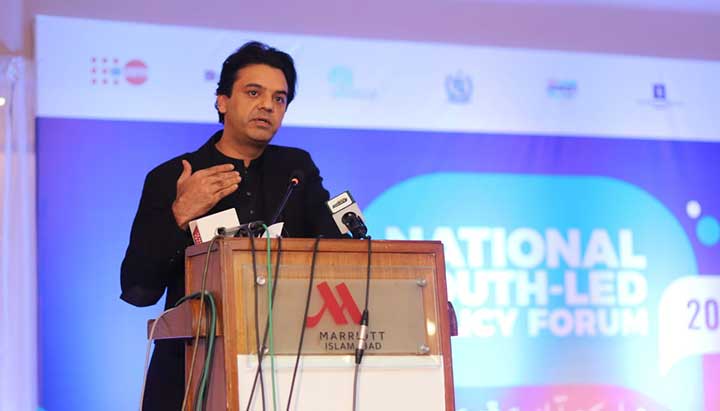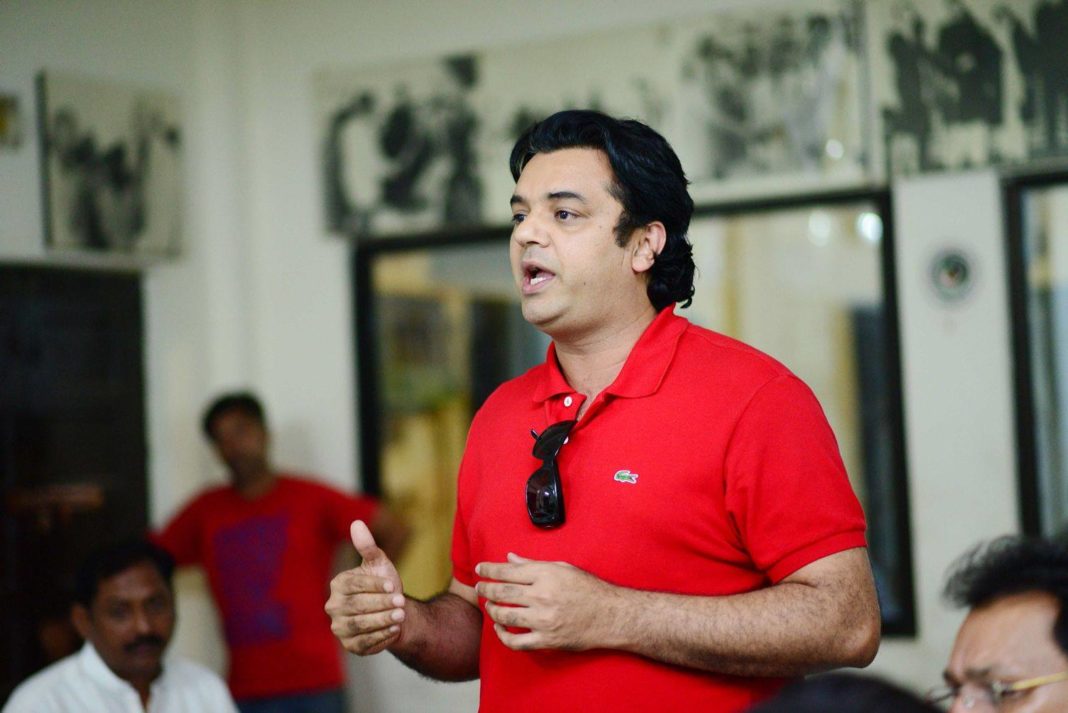By: Hadia Mukhtar
Investing in human capital is a nation’s most strategic and promising investment. If the youth of a country is given access to lucrative employment opportunities, quality education, health care, marketable skills, they can change the destiny of their country. Thus, Singapore, China, South Korea, and Malaysia had achieved miraculous economic progress by investing in their human resources and streamlining education that provided a platform for higher learning in science and technology.
Youth Bulge in Pakistan; boom or bust?
Being the fifth most populous and one of the youngest countries in the world (second youngest in South Asia after Afghanistan), Pakistan in the 21st century is facing a key challenge of demographic dividend; a youth bulge. More than 68% of the population is below the age of 30 years which is an asset for our nation. Unless this demographic dividend is not synergized positively and leveraged to foster national interests, Pakistan will be at the brink of lagging far behind its neighbors and will be unable to meet the SDGs agenda.
Being torchbearers of any nation, empowered youth are the foundation on which the legacy of any nation stands. Thus, investment in youth is the most promising and rewarding one especially if the economic and social progress is at stake. To ensure prosperous future of Pakistan, TVET is essential to secure the professional careers of Pakistani youth and foster nation building through prioritizing vocational skills.
At present, the HDI for Pakistan youth is at an abysmal phase. Approximately, 30% of the youth in Pakistan are uneducated and 77% leave their education in the lurch to work for financial reasons. Pakistan’s public expenditure on education as a percentage of GDP is estimated at 2.3% in the fiscal year 2019-20, which is the lowest in the region. Compared to international benchmarks, the allocated budget for education is lowest as of the agreed targets of 15-20% of the total budget and 4% of the GDP. . According to the Human Development Report, 2020, Pakistan was ranked 154 out of 189 countries in UNDP countries. This unpromising standing signifies that Pakistan has been unable to make any laudable progress in key educational parameters such as gross enrolment ratio, literacy rate, and expenditure on education as compared to regional countries. Additionally, the youth unemployment rate stands at 5.79 percent which is ironic since Pakistan is a land of opportunities due to its geo-strategic location and abundance of economic resources. Youth’s plight can be further expounded by the fact that 90% of the youth have no access to recreation facilities such as libraries, parks, and cinemas as their leisure is restricted due to their socio-economic conditions. Young women in particular have low labor force participation rates (24 percent) and experience higher unemployment (9.1 percent). Pakistan ranked 151 out of 153 countries on the Global Gender Gap Index Report 2020 released by the World Economic Forum, only managing to surpass Iraq and Yemen.
Unfortunately, when the Covid-19 pandemic struck the world, the challenges for youth development have manifold. Apart from posing adverse political and ramifications for Pakistan and the world, the pandemic has severely hampered education systems worldwide. In April 2020, along with the rest 191 countries, Pakistan, had to call for a nationwide school closure to contain the spread of the virus. For an uncertain duration, the disruption of education paralyzed youth development prospects in Pakistan where the literacy rate stood at 57%. With 220 million children of age 5 to 16 already deprived of free and compulsory education, the Covid-19 induce school closures appeared to be the last nail in the coffin.
However, every disaster has a silver lining. The Covid-19 pandemic, despite severing physical educational bonds between individuals, has opened avenues for digitalization. Digitalization has become the new norm with work and education shifting home overnight and virtual meeting platforms have taken precedence. Thus, to steer societies out of the striding tide of pandemic and strengthen the momentum of grit and resilience, unlearning the old ways in the emerging norm. As the youth grabs the reins of new skills, Wordsworth’s assessment of youth power in the wake of French revolutions becomes apt, “to be young was heaven”. Therefore, in these testing times, Pakistani youth can pave the path that strives to galvanize and create more opportunities than piling liabilities. With the mode of work shifting from physical to digital, it can facilitate the transition to a digital economy so that Pakistan can compete with the world for service provision and technical expertise.
Pakistan youth can act as agents of change by optimally utilizing digital media and create awareness about vaccine administration by being engaged with different groups and organizations that can reach out to the masses. The youth can also actively participate as workers, managers, and entrepreneurs to support the economic recovery, by innovating and finding solutions to the problems arising from the ongoing crisis, through the creation of new products and services using technology and other platforms.
Hurdles in synergizing the Youth asset
Youth Development in Pakistan fell prey to militancy and war on terror that incurred enormous economic and socio-political costs for the country. With more than 74,000 lives lost and around USD 128 billion economic losses incurred to the country, the human capital investment took a backseat. The poorer, uneducated, under-skilled, and under-represented youth were caught in the trap of violent extremism which ultimately marred the social fabric of Pakistani society.
Additionally, the passage of the 18th constitutional amendment in 2010 altered the national governance framework for youth both structurally and substantially. Youth transformed from being a federal subject to a devolved provincial one. Consequently, all provinces developed respective youth policies on the overtones of 2008 national policy.
The result has been a mixed bag of challenges, opportunities, and uneven delivery. Duplicate, Divergent, and often uncoordinated efforts have produced disputed arguments on the efficacy of devolution as a governance model for achieving optimal success in cross-cutting social sector domains such as youth, education, health, culture, and women, and so on. Moreover, Post-18th amendment governments–both federal and provincial–have battled with the challenge of defining legality and scope as well as resources, political wills, matching capabilities that remain incongruent concerning youth development.
Dawn of youth development and empowerment policies
A remarkable aspect of the emerging process of Pakistan’s youth development policies and programming have been the all-encompassing governance paradigms of preventing violent extremism and conflict and managing a war economy that has dominated policy narratives for years. The fact that the youth have become pawns in large-scale violence and thus threatening the already crippled law and order situation sparked the thought of introducing national security policy documents, such as National Counter Violent Extremism Guidelines prepared by NACTA (2015) and the National Internal Security Policy (2018) of the Federal Ministry of Interior. These policy initiatives explicitly underscore long-term institutional assurances to put Pakistan on a development-led growth trajectory through a blend of socio-economic and politico-legal policies to foster the inclusion and development of youth at national and provincial levels.
These recent national security policy documents are strategic and more structured rather than generic youth development initiatives. It is because they are funded by international bilateral and multilateral aid programming national governments, donor-funded interventions, civil society members, and NGOs. Moreover, their focus is on youth development from the prism of de-radicalization and including them in the mainstream by prioritizing education in such a manner that their skills are enhanced.
Additionally, multiple initiatives are taken by federal and provincial governments to bolster youth’s existing capabilities and give them an accommodating space to process them for the greater good. These initiatives include introducing youth-friendly policies and ingenuities such as internship programs, financial funds, entrepreneurship activities, vocational training programs, skills and leadership training, and loan, and laptop schemes. The 2018 general elections in Pakistan were seen as a game-changer for the country with an unprecedented registered youth vote bank estimated at 44 percent of the electorate. Thus, more youth development initiatives came to the forefront.
The prominent initiative among these is the Kamyab Jawan-National Youth Development Program (2019-2023), launched by the federal government, with support from several UN agencies. The program addresses six prime areas for federal-provincial collaboration which include, economic empowerment, social protection, health and wellbeing, youth-focused institutional reforms, and mainstreaming marginalized youth. Such investments are a laudable step in boosting youth’s existing potential and ensuring that their skills are aptly utilized and dividends reaped.
Scope of Technical Vocational education and Training (TVET) in Pakistan:
With the global economy becoming more professionalized, there is a shift from customary academics to skill or vocational training. Many western countries, particularly, the Scandinavian Countries align undue stress on TVET which trains both the graduates and school leavers in attaining technical expertise so that they can jumpstart their careers strategically.
Vocational training can be best understood through the dynamics of the Triple Helix Model that forms a Government-Industry-Education nexus. The nexus operates to foster state-of-the-art development in the crucial sectors of the economy and allows individuals to become competitive and equipped with the right and relevant, up-to-date skills which are essential to delivering sustainable growth and prosperity.
There is a dominant opinion in Pakistan that TVET has low standards and quality and is for people with lower abilities. This is not true. In very developed countries and integrated economies such as the UK, many intellectual students take a practical route to target their careers. Thus, the TVET programs equip them with novel skills and experiential knowledge that at times supersede the traditional degree programs.
These TVET programs can set a viable precedent for Pakistan who has a youth bulge and a land rich with opportunities and resources. This education system can allow Pakistan to integrate its marginalized youth into the mainstream as it can offer diplomas and training at affordable costs. Moreover, these TVET programs can be a commendable step in revamping and upgrading existing schools and universities’ curricula and courses on the grounds of emerging developments in industries and economies. TVET courses pave the way for a specialized and productive workforce ready to take up jobs, with professional abilities matching international standards. Studies explicate that employers prefer to hire people who already have the skills rather than training someone new, again, due to the experience aspect.
Bottom-Line
Empowered youth not only bring great success for themselves but also sustain the social and moral fabric of the societies as they undergo periods of rapid change and transition. Therefore, Reverend Dr. Martin Luther King, Jr assertion “One of the great liabilities of history is that all too many people fail to remain awake through great periods of social change. Every society has its protectors of the status quo and its fraternities of the indifferent who are notorious for sleeping through revolutions. Today, our very survival depends on our ability to stay awake, to adjust to new ideas, to remain vigilant and to face the challenge of change”, elucidates youth’s unprecedented role in ensuring progress in Pakistan amid challenges.
The writer is a geopolitical analyst with a keen interest in international politics. She can be reached at [email protected]



